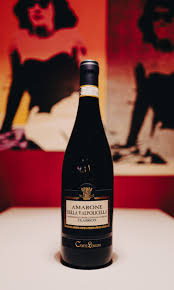Introduction to Amarone della Valpolicella
Amarone della Valpolicella is not just a wine; it’s an experience. Hailing from the picturesque hills of Italy’s Veneto region, this rich and velvety red captures the essence of tradition and artistry in every bottle.
With its deep flavors and intoxicating aromas, Amarone has become a beloved choice for connoisseurs around the world.
But with such depth comes a question that many enthusiasts ponder: when is the best time to savor this exquisite nectar?
Whether you’re enjoying it on a special occasion or simply indulging after a long day, understanding the nuances behind drinking Amarone can elevate your tasting experience.
Let’s embark on this flavorful journey together as we explore all there is to know about Amarone della Valpolicella!
The History and Origins of Amarone Della Valpolicella
Amarone della Valpolicella has a rich history that dates back to ancient Rome. The region of Valpolicella, located near Verona, has been producing wine since the time of the Romans. They recognized the area’s potential for growing grapes, particularly indigenous varieties like Corvina and Rondinella.
The name “Amarone” itself comes from “amaro,” meaning bitter in Italian. This reflects the wine’s unique taste profile, which balances sweetness with robust flavors. It was originally a by-product of Recioto, a sweet dessert wine made by drying grapes before fermentation.
Commercial production began in earnest in the early 20th century when innovative winemakers refined techniques to craft this bold red wine. Over decades, Amarone gained prestige and recognition beyond Italy’s borders, evolving into an iconic representation of Italian winemaking heritage. Its complex flavors now captivate palates around the world.
The Traditional Production Process of Amarone Della Valpolicella
The production of Amarone della Valpolicella is a captivating blend of art and tradition. It begins in the sun-drenched vineyards of the Valpolicella region, where grapes such as Corvina, Rondinella, and Molinara are carefully harvested.
After picking, these hand-selected grapes undergo a unique drying process called “appassimento.” Here, they are laid out on bamboo racks to dry for several months. This step concentrates their sugars and flavors, creating that rich profile we love.
Once dried, the grapes are gently crushed and fermented. The fermentation process can take weeks or even months as winemakers monitor temperature carefully to develop complexity.
Following fermentation, Amarone is aged in oak barrels. This aging not only adds depth but also allows the wine’s character to evolve beautifully over time. Each bottle tells a story steeped in heritage and meticulous craftsmanship.
Understanding the Aging Process of Amarone Della Valpolicella
Aging plays a crucial role in the character of Amarone della Valpolicella. After fermentation, this wine is typically aged for several years in oak barrels.
The choice of wood and the length of aging can significantly influence flavor profiles. Many producers opt for large Slovenian oak barrels, which impart subtlety without overwhelming the wine’s natural characteristics.
As it ages, Amarone develops layers of complexity. Rich notes like dried fruits, chocolate, and spices emerge over time. These flavors become more pronounced with extended aging.
Temperature and humidity during storage also affect how Amarone evolves. A stable environment helps preserve its inty while allowing for gradual maturation.
Each vintage brings its own story to life through aging, making every bottle a unique experience worth exploring at different stages of its journey.
Factors That Affect the Best Time to Drink Amarone Della Valpolicella
Several factors influence the ideal time to enjoy Amarone della Valpolicella.
First, its aging potential plays a crucial role. Younger vintages exhibit vibrant fruit notes but can be more tannic and bold. As they age, these wines evolve into complex layers of flavor, making older vintages often more appealing.
The specific vintage year also matters significantly. Each harvest yields different qualities due to climate variations. Some years produce exceptional grapes that enhance the wine’s longevity and richness.
Serving temperature is another key element. Amarone should be slightly cooler than room temperature for optimal taste release—around 16-18°C (60-65°F) works best.
Food pairing adds depth to your drinking experience too. Rich dishes like braised meats or aged cheeses complement its robust character beautifully, enhancing both the wine and meal flavors remarkably well.
Expert Recommendations for Drinking Amarone Della Valpolicella
When it comes to enjoying Amarone della Valpolicella, experts have a few tips up their sleeves.
First, serving temperature matters. Aim for around 60-65°F (15-18°C) to fully appreciate its rich aromas and flavors.
Next, consider decanting the wine. Pouring it into a decanter about an hour before consumption can enhance its bouquet and soften those tannins.
Pairing food with Amarone elevates the experience. Think hearty dishes like braised meats or aged cheeses that complement this luscious red’s depth.
Take your time when sipping. Let each sip linger on your palate; you’ll discover layers of complexity waiting to be explored.
These simple yet effective recommendations will ensure you savor every moment spent with this iconic Italian wine.
Conclusion: Enjoying Your
Enjoying your Amarone della Valpolicella is about more than just the wine itself; it’s an experience. Whether you’re savoring it on a cozy evening, pairing it with rich dishes, or celebrating a special occasion, timing can elevate that experience. The complexity of this wine offers something different depending on when you enjoy it.
For younger bottles, you may find vibrant fruit flavors and fresher notes come through as they breathe. In contrast, older vintages reveal depth and nuance that can speak to years of careful aging. Pay attention to how temperature affects the tasting—serving it at the right temperature enhances its characteristics.
Remember to consider personal preferences too. Some drinkers appreciate boldness while others lean towards subtler tones. Take time to explore various vintages and styles until you find what resonates most with your palate.
There’s no wrong time to indulge in Amarone della Valpolicella; it’s all about creating moments worth cherishing around this beautiful wine. Enjoy every sip as part of life’s journey!





